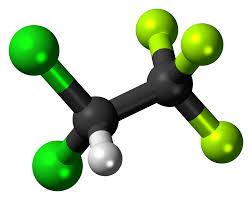
India on March 6, 2017 launched the country's latest plan to phase out the key refrigerant HCFC/hydrochlorofluorocarbon.
This is as part of the ultimate goal to close the use of ODS or ozone depleting substances by switching over to non-ozone depleting and low global warming potential technologies.
A plan is meant for the 2017-2023 period.
The final goal is to phase out consumption and manufacturing of this ozone-depleting refrigerant under an accelerated plan by 2030.
The HCFC is currently used in various sectors including refrigeration, air-conditioning and foam manufacturing.
Over 190 countries had in 1987 reached an agreement under Montreal Protocol to phase out the ODS in a time-bound manner.
Under the Protocol, India has already successfully phased out the earlier generation of refrigerants, Chlorofluorocarbons (CFCs) and Halon.
The country is currently phasing out the HCFC in a gradual manner.
A multilateral fund, set up under the Protocol, has approved USD 44.1 million for India's HCFC management plan for the 2017-23 period.
The money will be used to help industries to switch over to alternatives and train manpower. Domestic industries are, however, expected to invest in research & development (R&D) to find out clean alternatives.
Industries must invest in R&D to carve out a niche for India at a global level. It will also create skills and generate employment.
India had also acted pro-actively to reach a fair deal in Kigali, Rwanda in 2016 to phase out another refrigerant, hydrofluorocarbon (HFC), which is currently being used as an alternative to ODS like HCFC.
He insisted that the government had worked hard to protect interests of domestic industries and it's time for the industries to invest in research to develop cutting-edge technology that can be used in future.
After phasing out HCFC, the country will have to move to a next stage where it will work on to phase out HFC as per an agreement reached by it along with 195 countries in Kigali last year.
Though HFC is not ODS, the countries had agreed to gradually phase it out due to its climate-damaging potential.
India has, however, a lenient schedule to phase out HFC. It will have to cut use of HFC by 85% by 2047 over the 2024-2026 level (baseline).
HCFC: Know More- Hydrochlorofluorocarbons (HCFCs) are a large group of compounds.
- The structure is very close to that of Chlorofluorocarbons (CFCs), but including one or more hydrogen atoms.
- Under usual conditions, HCFCs are gases or liquids which evaporate easily.
- They are generally fairly stable and unreactive.
- HCFCs do not usually dissolve in water, but do dissolve in organic (carbon-containing) solvents. HCFCs are chemically similar to Hydrobromofluorocarbons (HBFCs), Chlorofluorocarbons (CFCs) and Halons.
- They display some similar properties, however they are much less stable and persistent.
- HCFCs are also part of a group of chemicals called as the volatile organic compounds (VOCs).